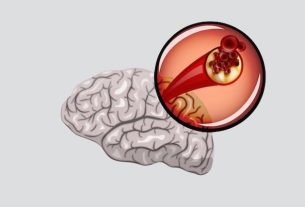An occupational therapist is a health professional who specializes in the prevention or treatment of physical, mental, emotional or developmental illnesses that limit a person’s ability to carry out daily activities.
The occupational therapy professional uses techniques or equipment that help the person learn new ways of doing daily activities, develop new skills and rehabilitate or maintain motor skills.
Generally, consultation with an occupational therapist occurs following a referral from doctors or physiotherapists, to complement the main treatment and allow the person to have independence in day-to-day activities at home, work or school.

What does an occupational therapist do
The occupational therapist is the professional responsible for helping people carry out their occupations, that is, day-to-day activities.
In this way, the occupational therapist helps to promote autonomy in daily activities, which involve work, school, leisure or self-care at home, improving well-being and quality of life.
What diseases does it treat
The occupational therapist helps complement medical and physiotherapeutic treatment in the following conditions:
- Sequelae of stroke, head trauma or spinal cord injuries;
- Cerebral palsy, mental disability, Down Syndrome or delayed psychomotor development;
- Attention deficit hyperactivity disorder (ADHD);
- Dementia, such as Alzheimer’s or Parkinson’s disease;
- Autism spectrum disorder;
- Autoimmune diseases, such as multiple sclerosis or rheumatoid arthritis;
- Sequelae of musculoskeletal problems, such as tendonitis, fibromyalgia or low back pain.
Furthermore, the occupational therapist can also complement psychiatric treatment for eating disorders, depression, anxiety or schizophrenia, for example.
What is the difference between physiotherapy and occupational therapy?
Generally, the physical therapist and the occupational therapist work together to rehabilitate health conditions. However, there are differences in their functions.
A physiotherapist helps people improve muscle strength, relieve pain and reduce inflammation, restoring physical function.
The occupational therapist focuses on rehabilitating and teaching new ways of doing daily activities, stimulating cognitive abilities, and adapting the environment in which they live, to improve the quality of life on a daily basis.
How occupational therapy works
Occupational therapy works using techniques to:
- Develop or restore motor skills for eating, walking, dressing, bathing, brushing teeth and combing hair;
- Indicate environmental changes that provide safety for people to move around, such as installing ramps, placing handrails on stairs, seats in the shower;
- Help improve memory and concentration problems, through cognitive and social activities;
- Stimulate involvement in leisure activities in children and motor development.
Furthermore, the occupational therapist can teach the person how to use some auxiliary equipment, such as special cutlery, walker or wheelchair, for example.
Bibliography
- QUINN, E.; HYNES, SM Occupational therapy interventions for multiple sclerosis: A scoping review. Scand J Occup Ther. 28. 5; 399-414, 2021
- BEAULIEU, C.; et al. Occupational, Physical, and Speech Therapy Treatment Activities During Inpatient Rehabilitation for Traumatic Brain Injury. Arch Phys Med Rehabil. 96. 8 Suppl; S222-34.e17, 2015
- LAY, LEAVE; et al. Occupational therapy for adults with problems in activities of daily living after stroke. Cochrane Database Syst Rev. 7. 7; CD003585, 2017
- NOVAK, I.; HONAN, I. Effectiveness of paediatric occupational therapy for children with disabilities: A systematic review. Aust Occup Ther. 66. 3; 258-273, 2019
- IKIUGU, MN; et al. Clinical Effectiveness of Occupational Therapy in Mental Health: A Meta-Analysis. Am J Occup Ther. 71. 5; 7105100020p1-7105100020p10, 2017
- MORRIS, K.; et al. Occupational therapy delivered by specialists versus non-specialists for people with schizophrenia. Cochrane Database Syst Rev. 10. 10; CD012398, 2018
- WOOD, J.; et al. Occupational Therapy Practice Guidelines for People With Parkinson’s Disease. Am J Occup Ther. 76. 3; 7603397010, 2022
- JANSSEN, S.; GRABANSKI, JL IN: STATPEARLS (INTERNET). TREASURE ISLAND (FL): STATPEARLS PUBLISHING. Occupational Therapy In Long Term Care. 2023. Available at: <https://www.ncbi.nlm.nih.gov/books/NBK537068/>. Accessed on 18 Jul 2023
- WELCH, C. D.; POLATAJKO, H. J. Applied Behavior Analysis, Autism, and Occupational Therapy: A Search for Understanding. Am J Occup Ther. 70. 4; 7004360020p1-5, 2016
- EDGELOW, M.; et al. Occupational therapy return to work interventions for persons with trauma and stress-related mental health conditions: A scoping review. Work. 65. 4; 821-836, 2020
- WALDER, K.; et al. Understanding professional identity in occupational therapy: A scoping review. Scand J Occup Ther. 29. 3; 175-197, 2022
- LANNIGAN, E. G.; NOYES, S. Occupational Therapy Interventions for Adults Living With Serious Mental Illness. Am J Occup Ther. 73. 5; 7305395010p1-7305395010p5, 2019

Sign up for our newsletter and stay up to date with exclusive news
that can transform your routine!
Warning: Undefined array key "title" in /home/storelat/public_html/wp-content/plugins/link-whisper-premium/templates/frontend/related-posts.php on line 12
Warning: Undefined array key "title_tag" in /home/storelat/public_html/wp-content/plugins/link-whisper-premium/templates/frontend/related-posts.php on line 13



